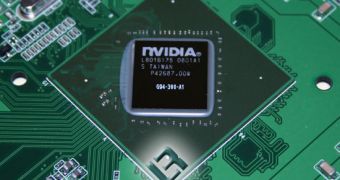Lately, processor manufacturers have started to integrate as much functionality as possible into their chips, Intel's upcoming Sandy Bridge CPU promising to deliver better graphics performance than some entry-level GPUs, leaving Nvidia in a pretty tough position, although the Santa Clara-based company doesn't seem to make much case of this situation.
In a recent interview with Cnet, Rene Haas, general manager, notebook products, at Nvidia, told the publication that although Intel had made great strides in performance, it still couldn't compete with discrete graphics in most situations.
"We've talked to a lot of [PC makers] about this. The feedback that we received is that many of the same issues still exist relative to [Intel's graphics] performance.
If you look at the ability to play next year's games, what's going to be the future-proofing component for integrated graphics?
For example, Windows 7's DX-11 (DirectX 11) does not run on Sandy Bridge integrated graphics. And GPU acceleration is now coming to browsers--IE9, Mozilla (Firefox), Chrome (Google).
[Browser acceleration] is not all there yet, but having that ability to offer it is going to be pretty huge," said Hass to Cnet.
To back his claims, Hass also mentioned the 200 plus Nvidia-equipped laptop models scheduled to be released in 2011as well as the company's proprietary Optimus technology that automatically changes between Intel HD graphics and the laptop's discrete GPU, according to the application being run.
What Nvidia's representative, however, fails to point out is that the integrated graphics found in Sandy Bridge are powerful enough to take on low-end desktop graphics cards such as AMD's Radeon HD 5450, as AnandTech's preview has found out.
Considering that laptop GPUs are usually a lot lower clocked than their desktop counterparts, it's possible that low-end solutions such as the GeForce 420M and 415M could just as well be surpassed by Intel's integrated graphics.
Until now, a large number of manufacturers have decided to release Sandy Bridge laptops with Nvidia graphics, the list including brands such as Acer, Alienware, Asus, Dell, Fujitsu-Siemens, HP, Lenovo, Samsung, Sony, and Toshiba.

 14 DAY TRIAL //
14 DAY TRIAL //